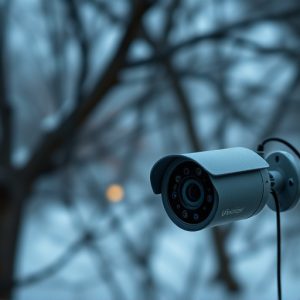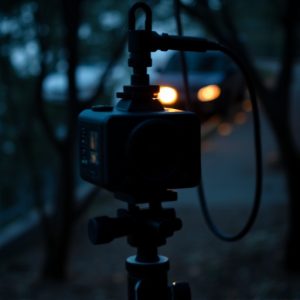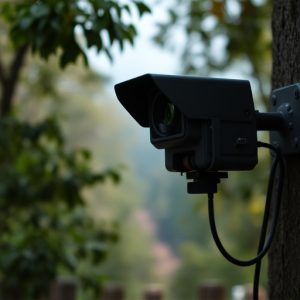Unveiling Hidden Risks: Detecting Battery-Powered Covert Nanny Cameras with Light Tests
Battery-powered covert nanny cameras have advanced as discreet surveillance solutions, easily hiding…….
Battery-powered covert nanny cameras have advanced as discreet surveillance solutions, easily hiding as everyday objects while capturing high-quality video via smartphones. Their performance is influenced by ambient light, making lighting tests crucial for detection and ensuring legal, ethical use. Advanced testing methods using infrared, UV rays, and image processing algorithms aid in identifying these concealed devices. Despite their discretion, these cameras pose privacy threats; effective strategies include regular inspections, strategic lighting, motion detectors, and surveillance software to safeguard personal spaces.
“Unveiling hidden threats: Battery-powered covert nanny cameras have become a growing concern, raising privacy issues. This article delves into the subtle art of identifying these disguised devices using light as a crucial tool. We explore ‘The Role of Light in Camera Identification’ and discuss innovative testing methods to detect these covert cameras. Furthermore, it highlights prevention strategies to mitigate their use, ensuring a safer digital environment.”
- Understanding Battery-Powered Covert Nanny Cameras
- The Role of Light in Camera Identification
- Testing Methods for Disguised Camera Detection
- Preventing and Mitigating Battery-Powered Covert Nanny Camera Use
Understanding Battery-Powered Covert Nanny Cameras
Battery-powered covert nanny cameras have become increasingly sophisticated, offering a discreet solution for monitoring and security. These tiny yet powerful devices are designed to be easily hidden, often resembling everyday objects like smoke detectors or power outlets, making them perfect for unobtrusive surveillance. The battery-powered feature allows for flexible placement, as they can be installed in various locations without the need for an external power source, ensuring a seamless and concealed setup.
This technology leverages advanced imaging sensors and compact design to capture high-quality video and images while remaining virtually undetectable. Users can remotely monitor live feeds or review recorded footage via their smartphones, providing peace of mind and enhanced security. The convenience and versatility of battery-powered covert nanny cameras make them a popular choice for parents, homeowners, and businesses seeking an effective surveillance solution without compromising privacy or aesthetics.
The Role of Light in Camera Identification
In the realm of disguised camera identification, light plays a pivotal role. Battery-powered covert nanny cameras, designed to remain undetected, rely heavily on lighting conditions for effective operation and successful identification. The subtle variations in ambient light can significantly impact the camera’s performance, visibility, and overall effectiveness in gathering evidence or monitoring activities.
Understanding how light interacts with these hidden devices is crucial. Different types of lights—natural, artificial, and even specific wavelengths—can either mask or reveal the presence of a camera lens. This makes lighting tests an essential component of identifying covert cameras, ensuring their effective deployment while adhering to legal and ethical considerations surrounding surveillance.
Testing Methods for Disguised Camera Detection
Testing methods for disguised camera identification have evolved with advancements in technology, particularly targeting battery-powered covert nanny cameras that are designed to be virtually undetectable. One common approach involves specialized lighting tests, where specific patterns or wavelengths of light are used to reveal the presence of hidden sensors and lenses. These lights can include infrared or UV rays, which many modern cameras are sensitive to, as they often use these spectrums for night vision or special effects. By simulating various lighting conditions, experts can determine if a camera is active and operational.
Additionally, advanced image processing algorithms play a crucial role in detection. These algorithms analyze visual data to identify patterns that might indicate the presence of a hidden camera, such as unusual reflections, lens flares, or artifacts that are not typically visible to the naked eye. By combining these testing methods, professionals can effectively uncover battery-powered covert nanny cameras, ensuring privacy and security in various settings.
Preventing and Mitigating Battery-Powered Covert Nanny Camera Use
Battery-powered covert nanny cameras, often hidden in everyday objects like plants or light fixtures, pose a significant privacy concern. Their small size and wireless nature make them easy to install and operate discreetly. However, this same portability also makes them vulnerable to detection and removal. One effective strategy to prevent and mitigate their use involves regular visual inspections and the implementation of lighting solutions that can expose hidden cameras. By strategically placing lights in areas commonly used by nannies or children, any unusual devices can be easily spotted.
Additionally, using infrared or thermal imaging technology, security professionals can identify heat signatures indicative of electronic components, further aiding in the detection of battery-powered covert nanny cameras. Regular maintenance and upgrades to security systems, including motion detectors and surveillance software, can also help deter potential installations and alert homeowners to any suspicious activity. These proactive measures are crucial steps towards safeguarding personal spaces and ensuring peace of mind.
Battery-powered covert nanny cameras, despite their hidden nature, can be identified through careful observation of light patterns. By understanding how these cameras utilize lighting and employing advanced detection methods, it is possible to prevent and mitigate their use. It’s crucial for both individuals and institutions to stay informed about these technologies and adopt proactive measures to protect privacy and security in today’s digital era.


